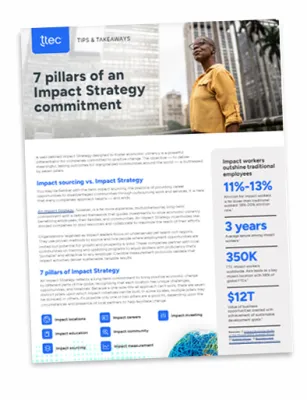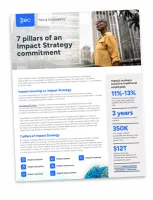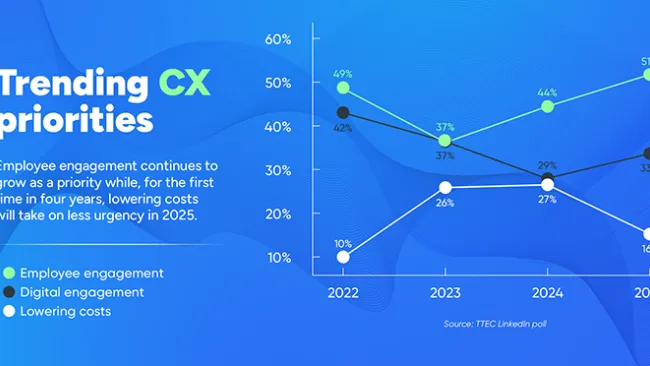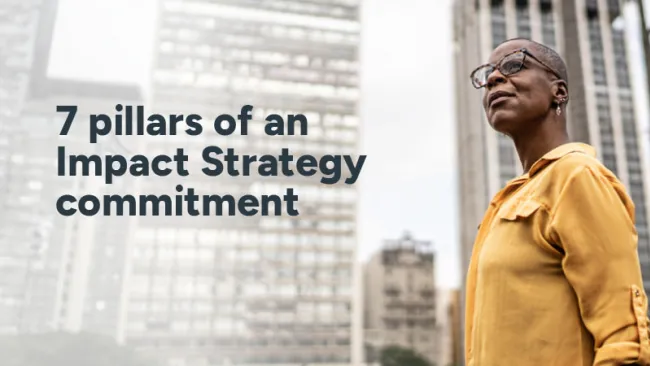Before creating a great customer experience, a company needs a strong internal culture. This is an often overlooked aspect of customer experience strategy, yet it is tremendously important. Leaders who invest in their employees’ development will create a foundation that naturally extends to customers.
TeleTech Consulting recently conducted research of 200 business leaders and team members to learn more about current attitudes toward workplace coaching, a key to employee development and engagement. The Attitudes to Workplace Coaching survey shows that the most successful companies consider employee coaching a long-term strategic initiative, not something to fix short-term issues.
Coaching is often viewed as necessary only to remedy poor employee performance or fix bad habits. Enlightened companies, however, view the practice as a positive way to develop employees, build employee engagement, boost retention, and elevate the quality of the entire staff. A 2011 study by Bersin found that “senior leaders who coach effectively and frequently improve their business results by 21 percent compared to leaders who never coach.”
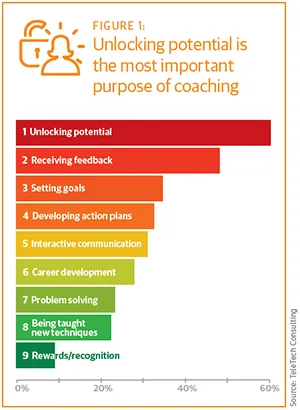
In contrast, our research found that overall, leaders are significantly underinvesting in coaching relative to the demand for coaching from their team members. So for as much coaching as you’re doing, chances are your employees want more.
Common coaching topics fall into two categories: those related to performance (looking back), and those related to potential (looking forward). Performance-related topics include recent activities, areas of success, problems encountered, relationship issues and lessons learned based on experiences. Potential-related topics are more about goals and objectives, ideas for accelerating performance, new ideas for changing activities and results, exploring alternative approaches to challenges, and trying to identify creative ways to unlock potential through further skills or mindset training or coaching.
The most common coaching conversations will occur in the moment as events unfold during the work day. This is where the coach is asked to intervene, provide advice, or offer solutions to issues, challenges, and new opportunities. The other most common coaching activities are the one-on-one review of performance or a side-by-side review of activities.
Find and focus on your purpose
The good news is that most of those surveyed agree on the purpose of coaching and how to measure its effectiveness. Unlocking potential is the number one response to “What is the purpose of coaching?” with more than 60 percent of survey participants placing it in their top three responses (see Figure 1).
The primary measure of coaching effectiveness is Performance improvement. More than 80 percent of the survey group placed this in their top three responses. Measuring performance improvement is usually straightforward, as most organizations have systems and processes for setting and measuring KPIs.
However, we counsel coaches to shift their focus to how KPIs can be improved, rather than whether the KPIs have been achieved. For instance, instead of focusing on whether customer-facing staff are achieving good customer satisfaction scores, their manager should look at improving what is driving the results. In other words, how can they respond faster, how can they get better at handling issues, and are they delivering solutions that truly help the customer?
In terms of capability, survey respondents agree that Asking good questions, Listening attentively and Demonstrating empathy are the top three skills required to be an effective coach (see Figure 2). All good coaching development programs should allocate a major part of their time to developing these three areas.
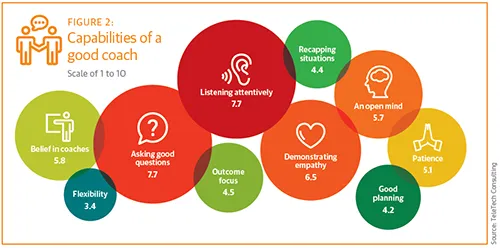
However, the battle to get coaches talking less and listening more is not over yet. Despite agreeing that questioning and listening are crucial to coaching success, too many coaches still default to tell mode during planned or unplanned coaching sessions. It might be expedient to talk more, provide solutions and play the role of instructor, but our survey group is definitely telling us: “ask us more questions and listen to the answers we give you.”
How much time should be dedicated to coaching? Seventy-five percent of respondents would commit to three or more hours of good quality coaching each month (see Figure 3). This suggests that if a leader is not giving his or her team members enough dedicated coaching time they will feel shortchanged. We often meet leaders in the field and in the training room who tell us they are always coaching, though not formally. While this may be the case, there have been studies that reveal that much of the coaching that leaders believe they are doing is not being recognized by their teams as coaching. It is all about perception.
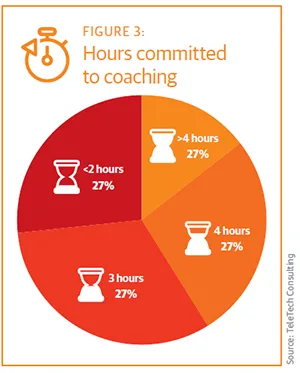
If you want to be recognized for the coaching you do, we encourage you to deliberately call the sessions “coaching,” dedicate time to a specific activity, demonstrate good planning and great follow-up, and use visible coaching tools. Otherwise, your team members may not recognize or value the contribution you believe you are making.
In addition, employees are telling their team leaders to “do their homework” before coaching sessions. They want them to come with a plan for the coaching event. They want them to remember what was discussed and agreed to in the last session and build on that for the next session.
Different roles, different perspectives
Both team leaders and senior leaders agree that performance improvement is the number one outcome of effective coaching. But they differ in their views of the other outcomes. These views shift depending on the role or the career stage respondents find themselves in.
Senior leaders see coaching as the key driver of career development for coaching recipients, while team leaders are more focused on resolving challenging issues. This confirms what we already know: First-level leaders tend to focus on short-term tactical coaching opportunities, whereas more senior leaders tend to focus on longer-term strategic objectives. If you are going to make the leap from manager (team leader) to leader of leaders, you need to be able to make that shift consciously while keeping in mind what team members, often at earlier stages in their career, want to achieve through coaching.
After performance improvement, receiving feedback and setting goals, team members rate career development as their next highest priority, well ahead of where it ranks for team leaders (see Figure 4). We believe this creates an opportunity to realign expectations from coaching for all levels in the organization.
Coaching, just like a good game of tennis, requires both players to know the rules, agree on the objectives, and have the right tools and equipment. We encourage you to put as much effort in the ‘how’ you approach coaching as you do the ‘what’—that is, the session itself. Keep in mind too that the different attitudes to coaching depend on the role level and career stage of the coachee. We are sure both parties will be well rewarded.

